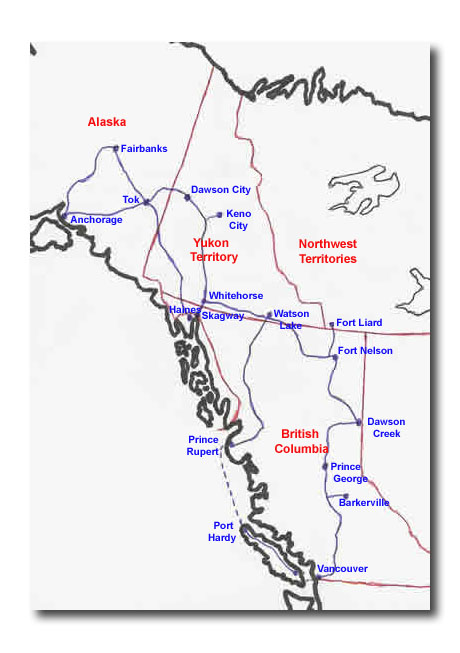|
Monday, August 9 -– Summit Creek Hike Our friends Sue and Larry were made for the Yukon. They are outdoors people in every sense. Whether it’s hiking or biking, running or cross-country skiing, canoeing or kayaking, they spend most of their spare time enjoying the incredible beauty of the outdoor activities here in the Yukon. In anticipation of our being here, Sue had taken time off work, and today, while I caught up on e-mail, the website, getting an oil change, etc., Sue took the boys on a hike. They went to a place called Summit Creek, which is near the White Pass Summit between Whitehorse and Skagway. They were gone the whole day, and came back tired but exhilarated at the same time. This is a case where a picture is worth a thousand words. And there are many pictures to enjoy. For photos of the Summit Creek Hike, click here. Tuesday, August 10 -– Whitehorse to Watson Lake Today would have been Anne’s and my 30th wedding anniversary. Before leaving Whitehorse, we went to Miles Canyon, just a few minutes’ drive from Sue and Larry’s place. Miles Canyon, where ran the infamous White Horse Rapids, which along with Five Finger Rapids, were the two most dangerous narrows that had to be navigated by those on their way to the gold fields just over a hundred years ago. Many people died, even more boats and supplies were lost. In the 1950s, a dam to supply the electricity for Whitehorse was built on the Yukon River just below Miles Canyon. A fish ladder was also built to allow the salmon to complete their 3,000 kilometer migration from the mouth of the Yukon River in the Bering Sea. The dam created a lake behind it, and raised the water level through Miles Canyon by about 15 feet, causing the White Horse Rapids to disappear. The city of Whitehorse is named for those rapids, because the whitewater turbulence looked like horse’s manes. Although you can no longer see the full intensity of the original rapids, the current flows through the canyon very swiftly, with plenty of whirlpools and undertow. It was really hard to leave Whitehorse. We’ve enjoyed our time here, and Sue and Larry have become dear friends in such a short time. For Whitehorse to Watson Lake photos, click here. |

Whitehorse to Watson Lake
Scroll down to read our Journal from Whitehorse to Watson Lake.
For photos of the Summit Creek Hike, click here.
For Whitehorse to Watson Lake photos, click here.